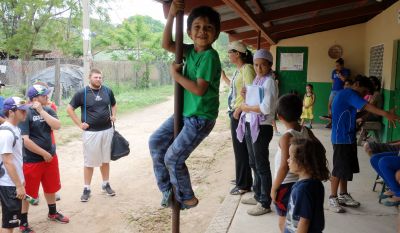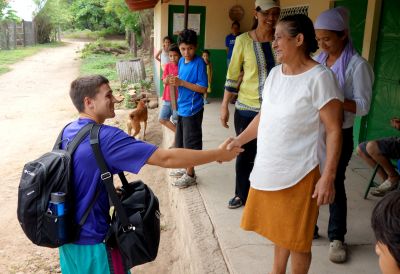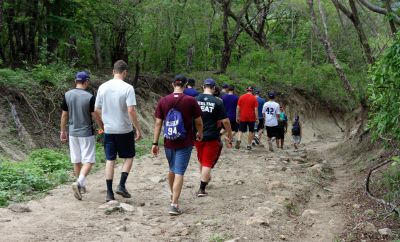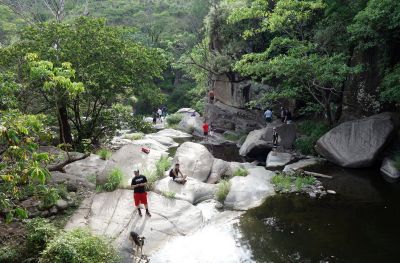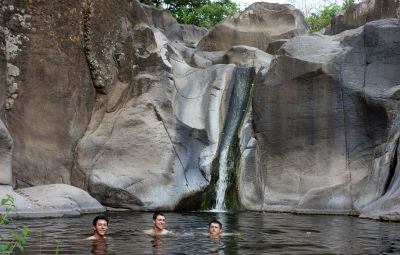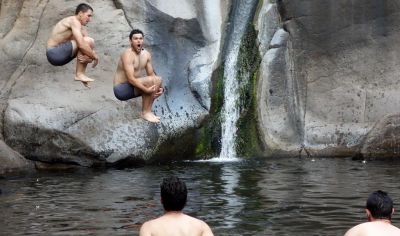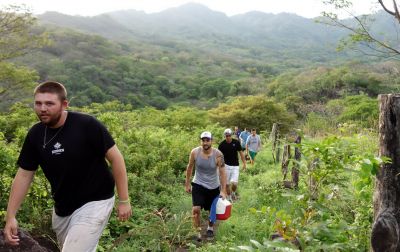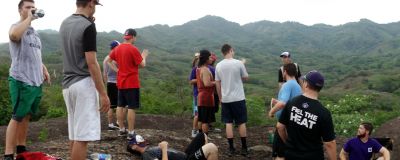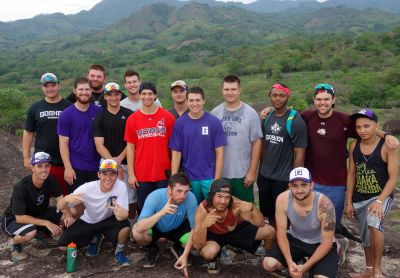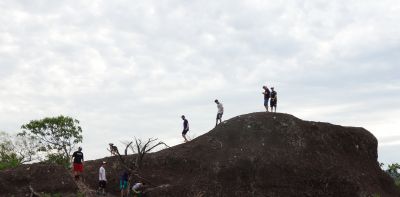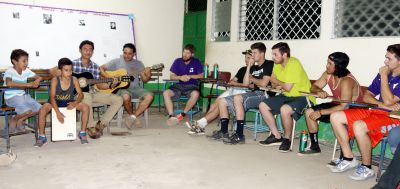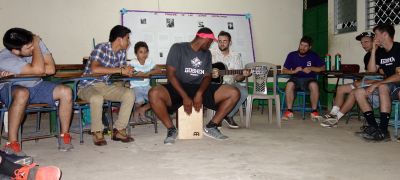May 27, Friday
Today we left for a two-day field trip to a small mountain community about a four-hour drive away. About a third of Nicaraguans live in Managua, the largest city, and the students have experienced what that is like. About a third live in smaller cities, like Jinotepe, and we’ve experienced that. But the other third of Nicaraguans live in mostly remote, rural areas as small farmers with few possessions, and we haven’t experienced that. Indeed, most of us have family incomes that place us in the world’s top 1-2% (an individual with an income of $25-35,000, or a family of four with a combined income of $100,000-140,000). However, those who live in the poorer half of the world are only familiar to us through movies, and we don’t personally know anyone like that.
When we arrived in community of El Lagartillo, population ~140, everyone was greeted by a community member who took them home, where we’ll spend the night and have our next four meals. Unlike most rural Nicaraguan communities, however, this one frequently has U.S. visitors and takes special care in food preparation. Indeed, when they tell us more about their community tomorrow, we’ll see that in many ways this community is unusual.
After lunch in our different homes, a university student from the community took the guys on a 45-minute hike to reach La Cascada (The Cascade) for a swim. In the evening we met in the 10th grade classroom and sat in a circle as two young men and two young boys played guitars and sang for us a combination of Nicaraguan and U.S. songs. Then we retired to our different homes for the evening.
